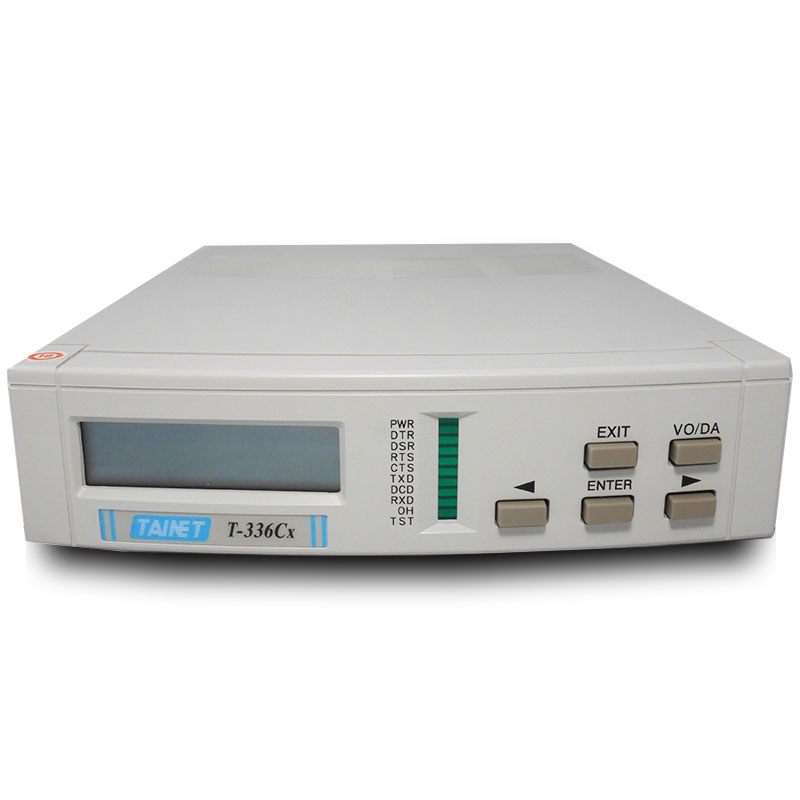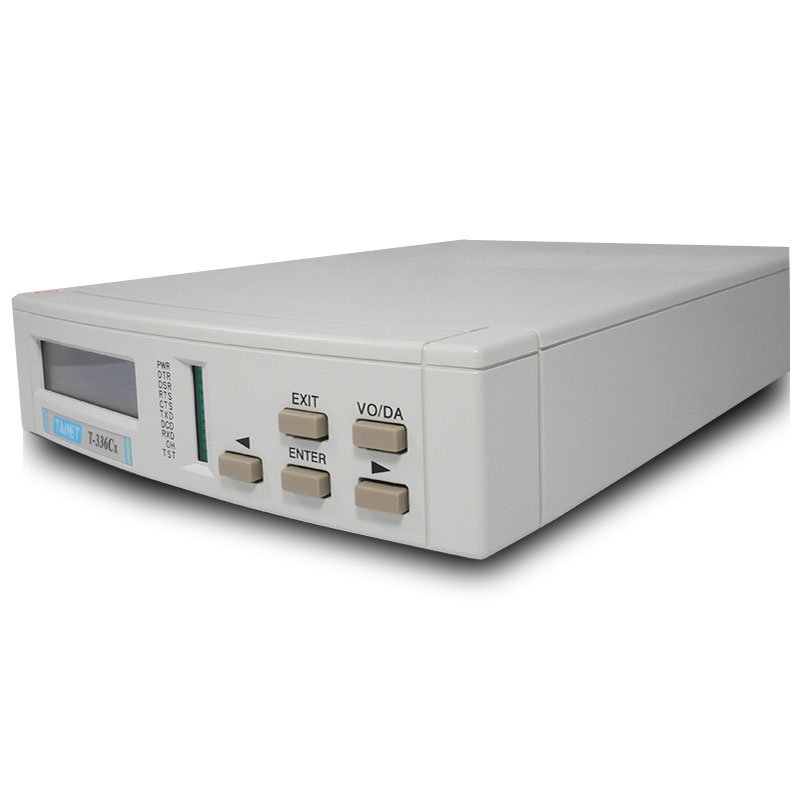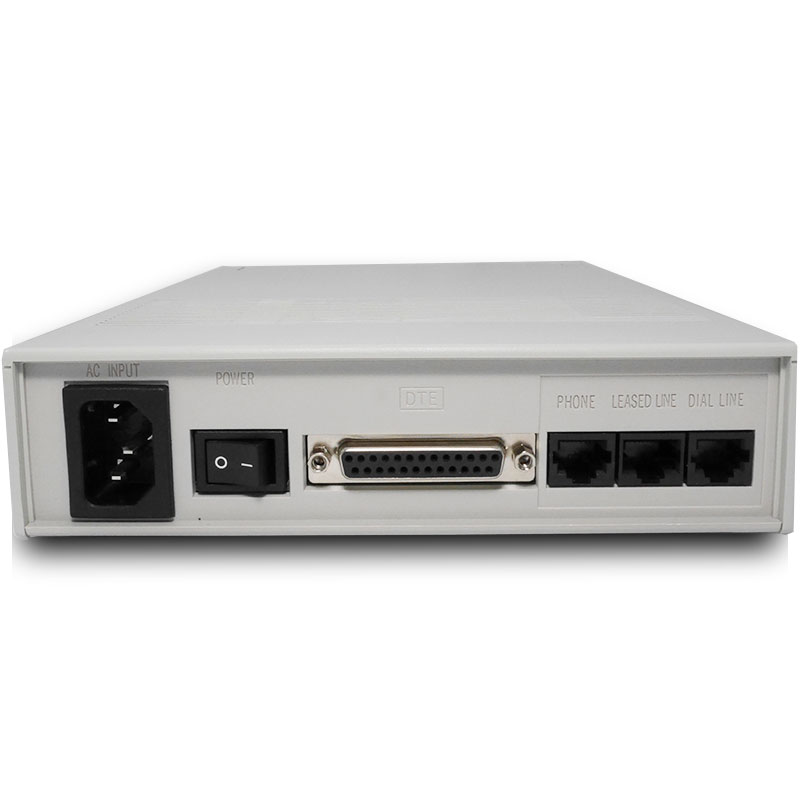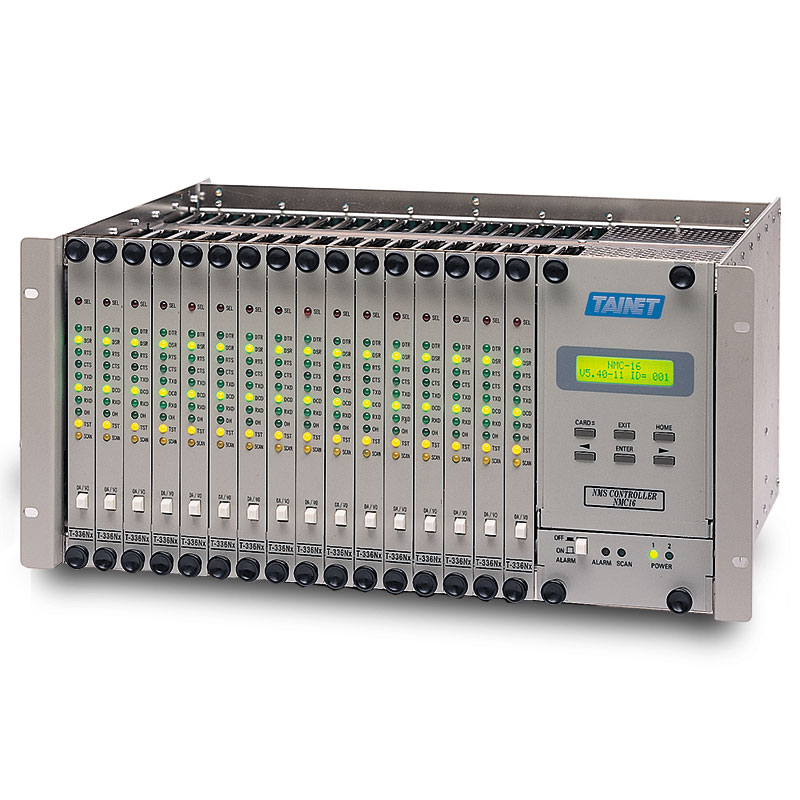-
Feature
- Fully compatible with ITU-T V.34+/ V.34/ V.32bis/ V.32/ V. 22bis/ V.22/ V.23/ V.21/ V.24/ V.28/ V.25bis/ V.54/ V.52/ V. 42/ V.42bis/ V.14/ V.13/ V.8 and Bell 212A/103
- 19” rack accommodates up to 16 modem cards with hot-swap and profile copy functions
- Achieve throughput up to 115200bps
- V.13 simulated carrier in half duplex
- MNP4, V.42 error correction
- MNP5, V.42bis data compression
- Extended AT and ITU-T V.25bis command set
- Leased line dial back-up and restore in manual or auto mode
- Auto fallback and fall forward
- Remote configuration via secondary channel
- Front panel lock and password protect
- Password & call back security
- Diagnostic capabilities:
- Auto or manual dialing/answer
- Front panel configuration via rubber switches and LCD
- Front panel key reset function
Analog loopback, digital loopback and remote, digital loopback (with pattern or not); BERT test pattern using 511
-
Specifications
Compatibility
- V.34+: 33.6/31.2 Kbps SM (4D TCM)
- V.34: 28.8/26.4/24/21.6/19.2/16.8/14.4/12/9.6/7.2/4.8/2.4 Kbps SM(4D TCM)
- V.32bis: 14400/12000/7200 bps TCM
- V.32: 9600 bps TCM, 9600/4800 bps QAM
- V.26bis: 2400/1200 bps DPSK
- V.22bis: 2400 bps QAM, 1200 bps BPSK
- V.22/Bell 212A: 1200 bps DPSK
- V.23: 1200/75, 600/75 bps FSK
- V.21/Bell 103: 300 bps FSK
Data Format
- Synchronous or Asynchronous
- Total bit length: 8, 9, 10, 11
Data Speed
- Asynchronous –
- Synchronous –
75/ 300/ 600/ 1200/ 2400/ 4800/ 7200/ 9600/ 12000/ 14400/ 16800/ 19200/ 21600/ 24000/ 26400/ 28800/ 31200/ 33600/ 38400/ 57600/ 76800/ 115200 bps
1200/ 2400/ 4800/ 7200/ 9600/ 12000/ 14400/ 16800/ 19200/ 21600/ 24000/ 26400/ 28800/ 31200/ 33600 bps
DTE Interface
- EIA RS-232C, ITU-T V.24/ V.28
Line Requirement
- Dial-up line, 2/ 4-wire leased line
- Transmit Level
- Dial-up line: 0 to -15 dBm; Leased line: 0 to -31 dBm
Receive Dynamic Range
- -4 to -43/ 0 to -33 dBm
Equalization
- Automatic adaptive EQ
Call Progress Monitoring
- Dial tone, Ring, Ring back, Busy and backup dial
Line Status Monitoring
- Tx level, Rx level, S/N ratio, EQM value, delay, phase jitter, freq. offset, far-end freq. offset, far-end echo, DTE format, retrain count, Tx baud rate, Rx baud rate, Tx carrier, Rx carrier, Tx speed, Rx speed, Tx power back-off level, Interface LED monitoring
Memory
- Non-volatile; 10 user profiles and 10 phone numbers with 30 characters each
Line Interface
- Cx/ Nx: RJ-11 for dial-up, JM8 (like RJ45) for leased line
- NDx: 6-pin Terminal Block or 50-pin Centronics
Transmit Clock
- Internal, Loopback, or External
Dialing Command and Type
- Extended AT and V.25bis using Tone/ Pulse/ Mixed
Flow Control
- RTS/ CTS, XON/XOFF, CTS only
Power Requirements
- Standalone: 100 ~ 240VAC Auto-range (±10% for full range), 47 ~ 63 Hz
- Rack-Mount -36 ~ -72VDC (optional), 90 ~ 260 VAC & 110 VDC (optional)
- Dual redundant power unit for rack (optional)
Dimensions and Weight
- Standalone: 180(W) x 48(H) x 262(D) mm; 0.93 Kg
- Line card: 220(W) x 19(H) x 328(D) mm; 0.6 Kg
- Rack-Mount: 482(W) x 220(H) x 380(D) mm; (chassis) 8 Kg
Operating Environment
- Operating temperature: 0°C ~ 50°C
- Storage temperature: -25°C ~ 70°C
- Relative humidity: up to 95% (non-condensing)
Certification
- CE LVD, FCC
-
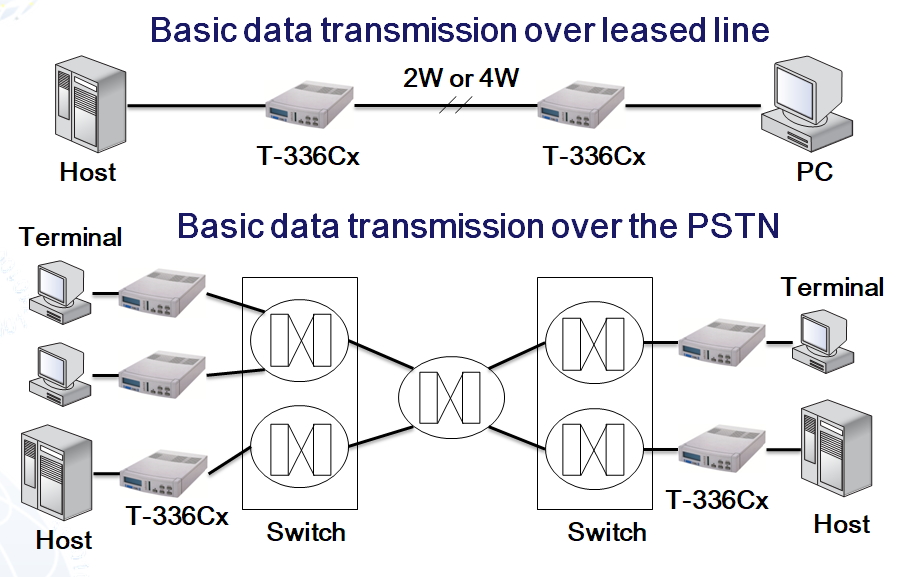
Application
- Home
- V.34 Analog Modem
